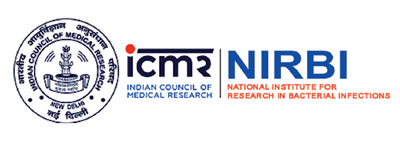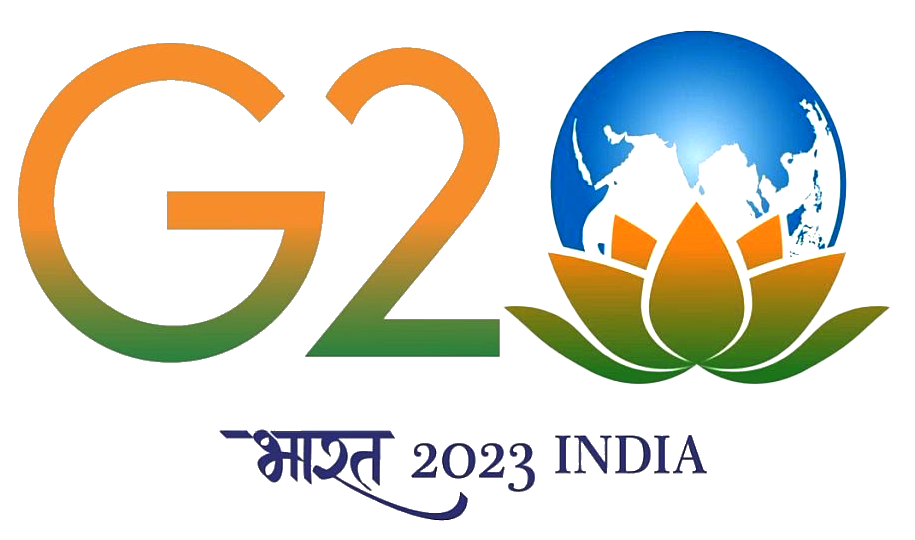ICMR - National Institute for Research
in Bacterial Infections
आईसीएमआर - राष्ट्रीय जीवाणु संक्रमण अनुसंधान संस्थान
Department of Health Research, Ministry of Health and Family Welfare, Government of India
स्वास्थ्य अनुसंधान विभाग, स्वास्थ्य और परिवार कल्याण मंत्रालय, भारत सरकार
WHO Collaborating Centre For Research and Training On Diarrhoeal Diseases
NICED : Scientists

Dr. Surajit Basak
| Name | Dr. Surajit Basak |
|---|---|
| Designation | Scientist D |
| Date of joining ICMR | 6th December 2017 |
| Date of joining present post: | 6th December 2017 |
| Discipline: | Bioinformatics |
| Division | |
| Specialization | |
| Email : | basaksurajit@gmail.com |
| Academic Qualification | |
| Graduation: | Chemistry (Calcutta University) |
| Post Graduation : | Chemistry (Calcutta University) |
| Doctoral | (Bose Institute/Jadavpur University) |
Profile
Research Experience
One of the major endeavors of the work of Dr. Basak is to set up a model to predict and characterize unknown strain about their potential to cause disease outbreak. The predictive model successfully developed for an imminent H1N1 outbreak in early 2015 is extremely important with respect to public health. Besides, his work on identification of various factors involved in adverse drug reactions in target proteins to develop therapeutic drugs with minimal/no side effect is very important. The predictive model for human drug side effect associated genes is a significant step in terms of reducing the risk of drug side effect.
Research Interests
Mapping the genomic landscapes is one of the most exciting frontiers of science. I have the opportunity to reverse engineer the blueprints and the control systems of living organisms. Genome sequence analysis is the key enabler in deciphering this process. My passion lies in genome sequence analysis using bioinformatics methodologies at the crossroads of evolution and organization pathogen genomes.
Projects
Extramural Projects as PI
- DHR funded project on ?Development of next generation drug library and information resource of the alternative therapeutic use of FDA approved drugs by Kernel-based machine learning integration of molecular structure, molecular activity and phenotypic data?. Duration: 2024-2027.
- ICMR funded project on "Computational molecular modelling and interaction study between ACE-2 receptors from diverse Indian human genome with the spike protein variants of SARS-CoV-2." Duration: 2022-2024.
- ICMR funded project on ?In silico comparative genomics approach to study the dynamics in genome evolution of Vibrio Cholerae?. Duration: 2015-2018.
- DST, Govt. of India funded project on
?Bioinformatics approach for probiotic genome
analysis?. Duration: 2016-2019.
.
Membership/ Fellow of Professional Societies/ Associations
- Life member of Indian Science Congress Association.
- Life member of Indian Biophysical Society.
Awards
- Young Scientist by DST, Govt. of India.
- Medical Science Award of Excellence presented by American Biographical Institute.
- Sir Nilratan Sircar prize presented by Bose
Institute.
Publications
2025
-
Goswami S, Ghosh M, Roy S, Basak S, Bhattacharjee S.
Quercetin combined with ciprofloxacin and gentamicin inhibits
biofilm formation and virulence in Staphylococcus aureus.
MicrobPathog. 2025 Mar;200:107297.
Pubmed
-
Dikhit MR, Roy C, Kayet P, Basak S, Ganguly S, Das P. Structural
insights into Leishmania donovani mevalonate kinase and its
interaction with toll-like receptors during early infection.
Acta Trop. 2025 Aug 7;270:107774.
Pubmed
2024
-
Kayet P, Bhattacharjee S, Dutta S, Basak S. Insights from
Shigella bacteriophage genomes analysis. Bioinformation. 2024
Dec 31;20(12):2050-2061.
Pubmed
-
Ghosh M, Basak S, Dutta S. Evolutionary divergence of
TLR9 through ancestral sequence reconstruction. Immunogenetics.
2024 Jun;76(3):203-211.
Pubmed
-
De R, Mukhopadhyay AK, Ghosh M, Basak S, Dutta S.
Emerging resistome diversity in clinical Vibrio cholerae strains
revealing their role as potential reservoirs of antimicrobial
resistance. Mol Biol Rep. 2024 Mar 9;51(1):409.
Pubmed
2023
-
Basak S*, Kayet P, Ghosh M, Chatterjee J, Dutta S.
Emergence of Genomic Diversity in the Spike Protein of the "Omicron" Variant.
Viruses 2023, 15(10):2132. Pubmed
-
Karmakar BC, Paul S, Basak S, Ghosh M, Mukherjee P, Das
R, Chaudhuri S, Dutta S, Mukhopadhyay AK.
Development and evaluation of a simple PCR assay and nested PCR for rapid detection of clarithromycin-resistant Helicobacter pylori from culture and directly from the biopsy samples in India.
Gut Pathogens 2023, 15(1):7. Pubmed
-
Kujur RRA, Ghosh M, Basak S, Das SK.
Phylogeny and structural insights of lipase from Halopseudomonas maritima sp. nov., isolated from sea sand.
International Microbiology 2023 Nov;26(4):1021-1031. Pubmed
2022
-
Ghosh M, Basak S*, Dutta S.
Underlying selection for the diversity of spike protein sequences of SARS-CoV-2.
IUBMB Life 2022, 74:213-220. Pubmed
-
Ghosh M, Basak S*, Dutta S.
Natural selection shaped the evolution of amino acid usage in mammalian toll like receptor genes.
Computational Biology and Chemistry 2022, 97:107637.
-
Patel K, Nayak B, Rana S, Krishnan P, Tandale BV, Basak S,
Sinha A, Kumar MS, Borah P, Singh H, Gupta N, Dutta S, Mohan A,
Das MK, Landge Y, Ganguly B, Devi U, Pati S, Palo SK.
Enablers and barriers towards ensuring routine immunization services during the COVID-19 pandemic: findings from a qualitative study across five different states in India.
Transactions of the Royal Society of Tropical Medicine and Hygiene 2022, 116:814-821.
2021
-
Roy A, Basak S*.
HIV long-term non-progressors share similar features with simian immunodeficiency virus infection of chimpanzees.
Journal of Biomolecular Structure & Dynamics. 2021, 39:2447-2454..
-
Ghosh M, Roy A, Basak S*, Dutta S.
Differential amino acid usage pattern of envelope genes of Dengue virus.
International Journal of Scientific Research 2021, 10 (8): 43-45..
2020
-
Patidar A, Mahanty T, Raybarman C, Sarode AY, Basak S, Saha B,
Bhattacharjee S*.
Barley beta-Glucan and Zymosan induce Dectin-1 and Toll-like receptor 2 co-localization and anti-leishmanial immune response in Leishmania donovani-infected BALB/c mice.
Scandinavian Journal of Immunology 2020, 92(6): e12952.
-
Jain P, Chowdhury G, Samajpati S, Basak S, Ganai A, Samanta S,
Okamoto K, Mukhopadhyay AK, Dutta S*.
Characterization of non-typhoidal Salmonella isolates from children with acute gastroenteritis, Kolkata, India, during 2000-2016.
Brazilian Journal of Microbiology 2020, 51:613-627.
2017
-
Banerjee R, Roy A, Basak S. HIV progression depends on
codon and amino acid usage profile of envelope protein and
associated host-genetic influence. Front Microbiol. 2017 Jun
15;8:1083.
Pubmed
-
Begum T, Ghosh TC, Basak S. Systematic Analyses & Prediction of
Human Drug Side Effect Associated Proteins from the Perspective
of Protein Evolution. Genome Biol Evol. 2017 Feb 1;9(2):337-350.
Pubmed
2016
-
Deb S, Basak S. Variation in synonymous codon usage in
Paenibacillus sp. 32O-W genome. Bioinformation. 2016 Dec
1;12(11):396-399.
Pubmed
-
Saha K, Sinha RK, Basak S, Sinha S. ISSR Fingerprinting
to Ascertain the Genetic Relationship of Curcuma sp. of
Tripura. American J Plant Sci. 2016; 7: 259-266.
2015
-
Banerjee R, Roy A, Das S, Basak S. Similarity of
currently circulating H1N1 virus with the 2009 pandemic clone:
Viability of an imminent pandemic. Infect Genet Evol. 2015 Jun;
32:107-112.
Pubmed
-
Deb S, Basak S. Comparative study of codon usage pattern
and compositional distribution between whole genome and
virulence gene set of Vibrio cholerae N16961. Comp Mol
Bio. 2015; 5:1-4.
-
Ray Choudhury P, Basak S, Sil SK. Host based
specialization in Aphis Gossypii Glover, evidenced from DNA
barcode studies from Tripura, North-East India. J Appl Biosci.
2015; 41: 33-39.
2014
-
Banerjee R, Das B, Balakrish Nair G, Basak S. Dynamics in
genome evolution of Vibrio cholerae. Infect Genet Evol.
2014 Apr; 23:32-41.
Pubmed
2013
-
Ghosh P, Naha A, Basak S, Ghosh S, Ramamurthy T, Koley H,
Nandy RK, Shinoda S, Watanabe H, Mukhopadhyay AK. Haitian
Variant tcpA in Vibrio cholerae O1 El Tor strains of Kolkata,
India. J Clin Microbiol. 2014 Mar; 52(3):1020-1021.
Pubmed
-
Labala RK, Das S, Basak S. ASRDb: A comprehensive
resource for archaeal stress response genes. Bioinformation.
2013 Jul 12; 9(12):650-655.
Pubmed
2012
-
Dasgupta A, Banerjee R, Das S, Basak S. Evolutionary
perspective on the origin of Haitian cholera outbreak strain. J
Biomol Struct Dyn. 2012; 30(3):338-346.
Pubmed
-
Banerjee R, Roy A, Ahmad F, Das S, Basak S. Evolutionary
Patterning of Hemagglutinin Gene Sequence of 2009 H1N1 Pandemic.
J Biomol Struct Dyn. 2012; 29(4):733-742.
Pubmed
2011
-
Ghosh S, Chakraborty K, Nagaraja T, Basak S, Koley H, Dutta S,
Mitra U, Das S. An adhesion protein of Salmonella enterica
serovar Typhi is required for pathogenesis and potential target
for vaccine development. Proc Natl Acad Sci U S A. 2011 Feb 22;
108(8):3348-3353.
Pubmed
2010
-
Basak S, Mukhopadhyay P, Gupta SK, Ghosh TC. Genomic
adaptation of prokaryotic organisms at high temperature.
Bioinformation. 2010 Feb 28;4(8):352-356.
Pubmed
2009
-
Sinha NK, Roy A, Das B, Das S, Basak S. Evolutionary
complexities of swine flu H1N1 gene sequences of 2009. Biochem
Biophys Res Commun. 2009 Dec 18; 390(3):349-351.
Pubmed
-
Basak S, Banerjee R, Mukherjee I, Das S. Influence of domain
architecture and codon usage pattern on the evolution of
virulence factors of Vibrio cholerae. Biochem Biophys Res
Commun. 2009 Feb 20; 379(4):803-805.
Pubmed
2008
-
Basak S, Mukherjee I, Choudhury M, Das S. Unusual codon
usage bias in lowly expressed genes of Vibrio cholerae.
Bioinformation 2008; 3(5): 213-217.
Pubmed
-
Mukhopadhyay P, Basak S, Ghosh TC. Differential Selective
Constraints Shaping Codon Usage Pattern of Housekeeping and
Tissue-specific Homologous Genes of Rice and Arabidopsis. DNA
Res. 2008 Dec; 15(6):347-356.
Pubmed
-
Kahali B, Basak S, Ghosh TC. Delving deeper into the
unexpected correlation between gene expressivity and codon usage
bias of Escherichia coli genome. J Biomol Struct Dyn. 2008 Jun;
25(6):655-661.
Pubmed
2007
-
Basak S, Roy S, Ghosh TC. On the origin of synonymous
codon usage divergence between thermophilic and mesophilic
prokaryotes. FEBS Lett. 2007 Dec 22; 581(30):5825-5830.
-
Mukhopadhyay P, Basak S, Ghosh TC. Nature of selective
constraints on synonymous codon usage of rice differs in GC-poor
and GC-rich genes. Gene. 2007 Oct 1; 400(1-2):71-81.
Pubmed
-
Mukhopadhyay P, Basak S, Ghosh TC. Synonymous codon usage
in different protein secondary structural classes of human
genes: Implication for increased non-randomness of GC3 rich
genes towards protein stability. J Biosci. 2007 Aug;
32(5):947-963
Pubmed
-
Kahali B, Basak S, Ghosh TC. Reinvestigating the codon
and amino acid usage of S. cerevisiae genome: A new insight from
protein secondary structure analysis. Biochem Biophys Res Commun.
2007 Mar 16; 354(3):693-699.
Pubmed
2006
-
Basak S, Ghosh TC. Temperature Adaptation of Synonymous
Codon Usage in Different Functional Categories of Genes: A
Comparative Study between homologous genes of Methanococcus
jannaschii and Methanococcus maripaludis. FEBS Lett.
2006 Jul 10; 580(16):3895-3899
Pubmed
-
Joy F, Basak S, Gupta SK, Das PJ, Ghosh SK, Ghosh TC.
Compositional correlations in canine genome reflect similarity
with human genes. J Biochem Mol Biol. 2006 May 31;
39(3):240-246.
Pubmed
2005
-
Gupta SK, Banerjee T, Basak S, Sahu K, Sau S, Ghosh TC.
Studies on codon usage in Thermoplasma acidophilum and
its possible implications on the occurrences of lateral gene
transfer. J Basic Microbiol 2005; 45(5): 344-354.
Pubmed
-
Basak S, Ghosh TC. On the origin of genomic adaptation at
high temperature for prokaryotic organisms. Biochem Biophys Res
Commun. 2005 May 13; 330(3):629-632.
Pubmed
-
Basak S, Mandal S, Ghosh TC. Correlations between genomic
GC levels and optimal growth temperatures: some comments.
Biochem Biophys Res Commun. 2005 Feb 25; 327(4):969-970.
Pubmed
2004
-
Basak S, Banerjee T, Gupta SK, Ghosh TC. Investigation on
the Causes of Codon and Amino Acid Usages Variation Between
Thermophilic Aquifex aeolicus and Mesophilic Bacillus subtilis.
J Biomol Struct Dyn. 2004, 22(2): 205-214.
Pubmed
-
Banerjee T, Basak S, Gupta SK, Ghosh TC. Evolutionary
Forces in Shaping the Codon and Amino Acid Usages in Blochmannia
floridanus. J Biomol Struct Dyn. 2004, 22(1): 13-23.
Pubmed


